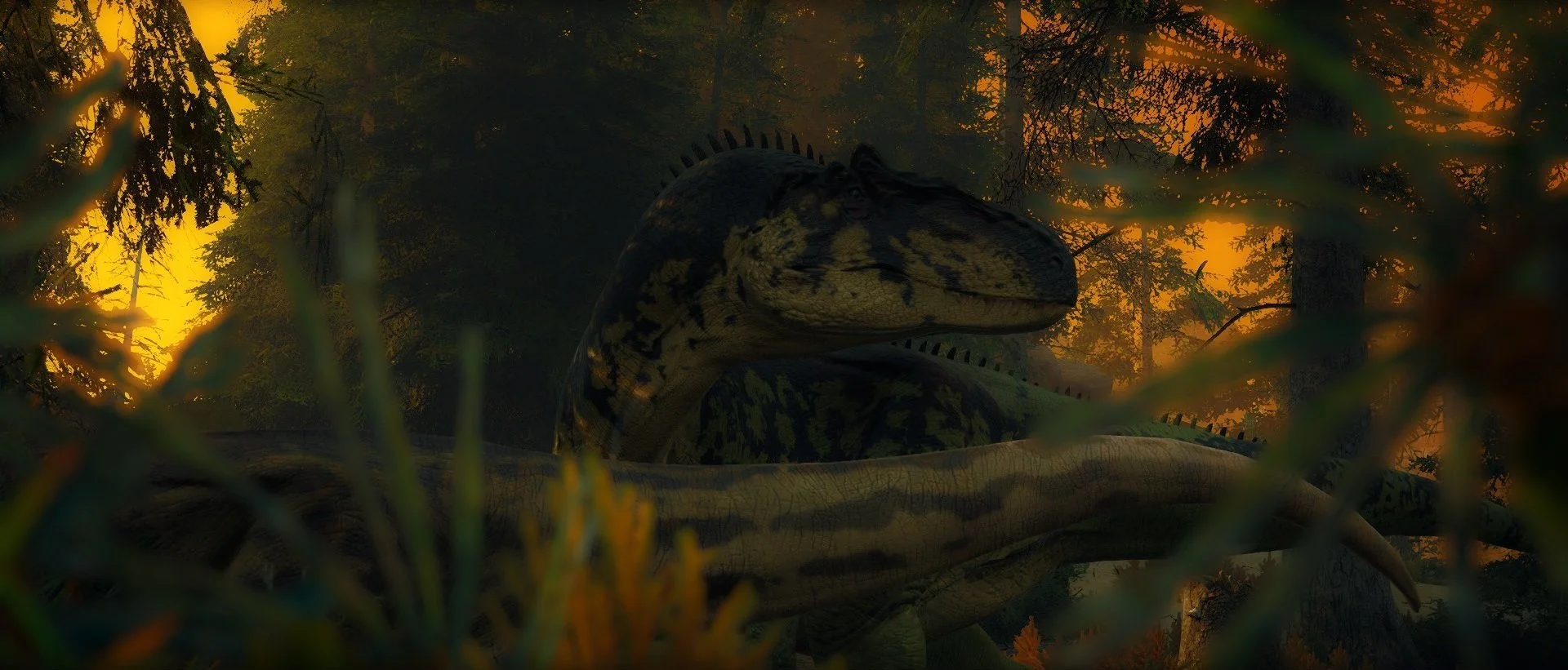Dimetrodon
Tier: 4
Type: Semi-aquatic carnivore
Passive growth time: 2 hrs 59 min
Pod size: 5 sub adults/adults, 1-9 juveniles/adolescents
Hierarchy: Kratocracy
Mating bond: Monogamous
Nest size: 1-2 offspring per pair
Diet tags: Piscivore, carnivore, cannibalistic, opportunistic, semi-scavenger & ovivore
Preferred food: Fish, Tier 1-4 herbivores & carnivores
Species specific rules: If they have at least 4 sub adults/adults, they can also hunt Tier 5-6 herbivores & carnivoresBehaviors in nature
Dimetrodon can be observed basking under the sun, enjoying the warmth of the coastal shores. Constantly in and out of various shores and islands, Dimetrodon groups will travel along numerous coastlines in search of prey. They will stalk their prey, by tracking trails of scent and footprints, and while listening closely to its surroundings. This behavior ensures that Dimetrodon is able to feed frequently, maintaining a consistent source of food. These sailed lizards are territorial with their food as well as offspring, ensuring that other species do not interfere with their lifestyle.
Social behavior
Dimetrodon group members tend to stay close to one another, often observing and taking care of the younger members of the group. Despite this, there is a power structure within the group. Typically, the largest or strongest within the group will eat first, and sometimes Dimetrodons of the same size may compete to establish dominance. Dimetrodon groups are consistently active during the day and conserve their energy during the later hours to prepare for the next day. Female Dimetrodons are often more assertive compared to their male counterparts. When alone, a female Dimetrodon will rely on cannibalism more frequently than lone males. Groups consisting solely of male Dimetrodons tend to be more docile and passive between hunts.
Recommended behaviors
╸Female offspring often leave the nest earlier than their male siblings to explore their surroundings.
╸When hunting in water, Dimetrodon plays the long game, allowing its prey to get more fatigued throughout the hunt.
Courtship
The mating season for Dimetrodon begins during the mid summer months. Packs of Dimetrodons will start their migration east, seeking a vast coastline to find potential mates. Selection of mates will proceed with male Dimetrodons displaying feats of strength, speed, and the display of their sails to attract the best suitable partner. The assertive females will seek out the strongest and most confident males and will even fight other females in order to get to mate with the male. Once a male and female Dimetrodon form a pair, they may occasionally clash with each other to determine dominance within the two.
Nesting & offspring
Dimetrodon typically builds its nest close to beaches and shores, often choosing areas with lush vegetation and natural shelters, such as caves, that provide shade for the eggs. Both parents participate in the care and raising of the young, however it is more common for mothers to teach their offspring on hunting and survival techniques. Despite being at the bottom of the feeding hierarchy, the young are given the highest level of protection within the group. The mother ensures the well-being of her offspring by bringing them strips of meat and fish to the nest. Dimetrodons do not tolerate the presence or interaction of other species around their young. Siblings engage in playful wrestling and exhibit a strong social bond, often amusing themselves with various objects like rocks and seashells.




